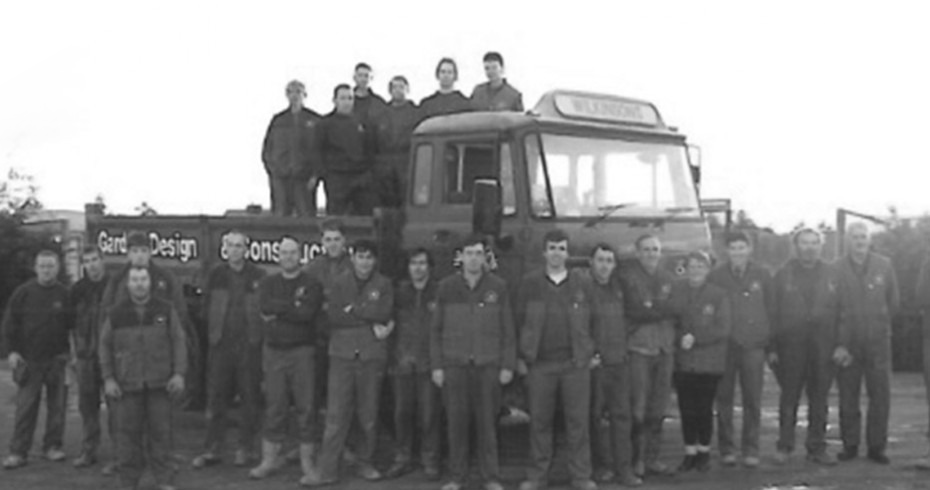Preparing for a Winter Wonderland
December 6, 2023
As 2023 comes to a close and we find ourselves in the colder months of the year, it’s important to take some time to prepare our gardens for the winter months ahead. Wilkinsons Landscapes Director, Simon, shares some advice on fleecing and mulching plants, as well as building winter wildlife sanctuaries to support your local wildlife until Spring.
Fleecing Plants
“Winter frost can be harsh on plants, and one of the ways we can protect them is with fleecing, which is just like a nice warm blanket for your plants,” Simon said on our recent trip around the Plant Centre. Ever prepared, Simon produced a Cordyline Australis (that’s an Australian Cabbage Palm or New Zealand Cabbage Tree by its common name), a fleecing bag, and canes to begin his demonstration.
”Now the nice thing about this plant is that it kind of comes with its own fleece, with a little bit of input from us,” Simon explained ”What we’re going to do is crown the leaves up, but not overly tight so that we’re not causing any damage, but enough so that it will hold itself together.”
”Then I just take an old leaf and use that to tie the top.”
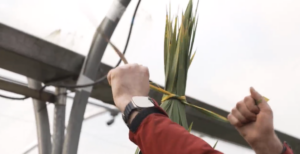
”The next thing to do is use some canes, maybe even some wooden sticks.” Simon continued ”what we’re doing here is just giving it the opportunity to trap some air around the plant. Because at the end of the day it’s not the fleece itself that’s doing the work, it’s actually the air that the fleece traps that forms the insulation.”
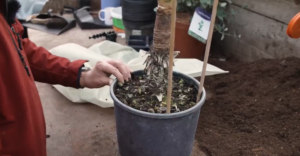
”We’ve got to make sure that the canes are nice and solid so that when we put the fleece on, we’re not curling in.”
Simon then produced a fleece bag, which he informed us was the ‘Rolls-Royce’ of plant fleecing, but that a normal roll of fleece would be another option. Whatever product you use Simon’s advice is to make sure that there are no air gaps.
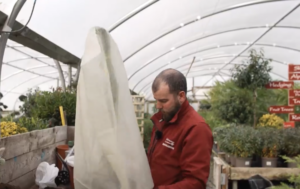
Helping your Local Wildlife
Simon took us around the plant centre towards the display gardens where he showed us how to help the wildlife in our own gardens at home. Simon said that helping our with the local birds and small animals that frequent our outside spaces can be as simple as ”some twigs and leaves just to give them the habitat that they need, the facility to make a nest, or just somewhere to hide from predators.”
”Other things that are really important are additional food, the berries aren’t on the trees or shrubs anymore so we need to look at things like putting bird feeders down but more importantly water. It can be really hard for animals to source water in the winter months, especially when the ground is frozen, they have nothing to get at.”
Mulching Plants
”So, just like the critters in the garden, our plants need a helping hand in the winter and one of the ways that we can do this is by applying a mulch,” Simon explained on our walk back from the display gardens. ”Now you can make your own mulch through compostable garden items such as leaves or branches and shredding them up,” he continued ”but if you do that I suggest that you give them a good amount of time to rot down so that they’re not rotting on top of your plant because that can actually steal the nitrogen from the soil which will give you a poorer result in the coming spring.”
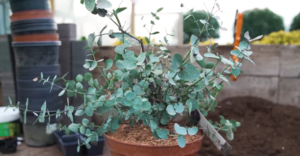
”On the nursery we use our own specialist, ready-made mulch, which is really good and can actually be quite decorative.” Simon went on to explain to us that mulch has several advantages such as water retention, holding back the weeds, and of course its insulating properties. ”Now, if I was insulating a plant on the nursery what I’d do first is just apply a small amount of slow release fertiliser beneath the mulch.”
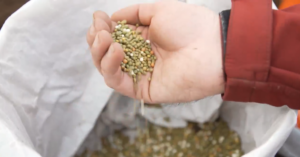
”Then just give it a nice generous covering which really helps give it a bit of a blanket for the winter,” he said ”this way we should see a really good result in the spring.”
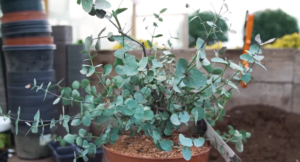
”Plants that you should predominantly look to mulch are herbaceous perennials that have died back for the winter. What we’re doing is protecting that root ball so that we see really good results next year.”
